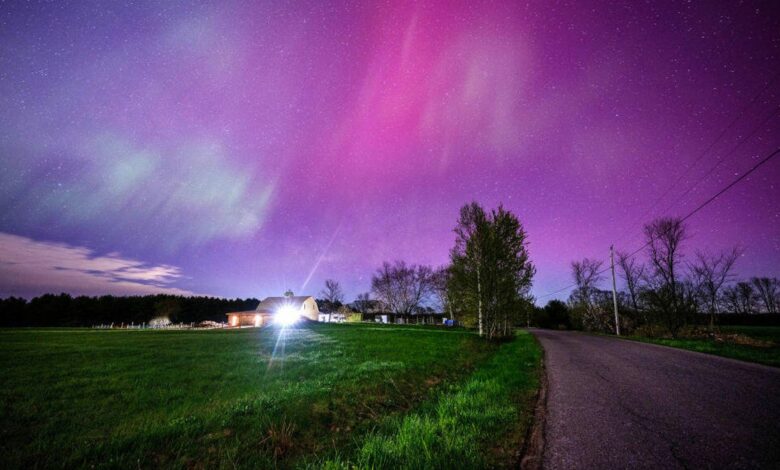Last night to see the Northern Lights: Aurora Borealis watch extended

Every time news sites (including this one) write about the Northern Lights, I wonder if people actually saw them. This time, the Northern Lights, which are supposed to be visible until August 1 in some areas, were not expected to be as beautiful as they were on May 10 and 11. But people are definitely enjoying the breathtaking skies. A photographer in my home state of Minnesota took a photo of beautiful view of the northern lights above the water in Grand Marais. And closer to where I live now, another photographer took a great photo of the Northern Lights just before sunrise in OregonRead on for tips on how best to spot the Northern Lights.
The National Oceanic and Atmospheric Administration’s Space Weather Prediction Center first placed a geomagnetic storm warning that runs through July 31, but will be extended later on Monday extended the wait until August 1.
Read more: How come I can never see the Northern Lights from where I live?
“A number of complex sunspot groups are present in the visible solar disk and solar activity has increased, including an R3 (strong) solar flare Sunday night,” the center posted. “A number of (coronal mass ejections) have been associated with the increased activity, and at least four of these have predicted Earth-directed components, with possible arrivals beginning Tuesday through Thursday.”
A coronal mass ejection is essentially a break in the sun’s magnetic field, causing an explosion that shoots solar particles into space. Those solar particles are now on their way to Earth, where they can cause a geomagnetic storm.
The center issued a G3 storm warning, referring to a severe storm, for July 30, and a G2 storm warning, referring to a moderate storm, for July 31-August 1. Event from May 10-11 was even seen in areas where you don’t normally see an aurora borealis and was rated as a G5, or extreme storm. This one won’t be as strong, but keep your hopes high depending on where you live.
Read more: Spot 6 planets in the sky at once during this upcoming planet parade on August 23
“If forecast conditions occur in the late evening hours, the aurora could become visible as far south as the northeastern U.S., the upper Midwest, and the rest of the northern states, including northern Oregon,” the forecast center said.
Want a low-key reminder? If you expect to see the Northern Lights in your home region, keep an eye on social media over the next few nights. As soon as your neighbors see the Northern Lights, you know they’ll be sharing photos and locations.
When and how can you see the Northern Lights?
City dwellers are at a disadvantage when it comes to seeing the Northern Lights because of light pollution, which is pretty much what it sounds like, the lighting up of the city night sky from street lights and other sources, which hinders our ability to see stars and planets.
If you’re determined to see the Northern Lights and your region of the country is on your route, you could try driving to a rural area without street lights. Unfortunately, the weather forecast can get in your way. Cloudy conditions can sweep across any state at any time, making it even more difficult to predict the Northern Lights.
Read more: You can watch a unique cosmic explosion from your own backyard
There is no specific time when it is best to see or photograph an aurora event. If the sky where you are is dark, you might be able to see it, and that is about as specific as meteorologists can be. And it can come and go. You can see an aurora, think it is gone, only to see the sky light up again an hour later.
This is a busy summer for celestial events. A six-planet parade is expected on August 23, and an upcoming nova is also expected to light up the night sky, but the exact date is not yet known.




